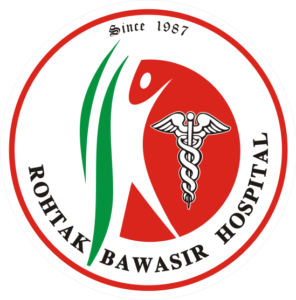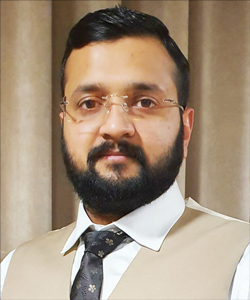From Discomfort to Relief: Innovative Treatments for Piles


Updated on: 4th Jun 2024
Introduction
Millions of individuals worldwide suffer with piles, also referred to as hemorrhoids, which are extremely uncomfortable and interfere with daily living. Even though this is a prevalent condition, many patients are not aware of the cutting-edge therapies that can successfully reduce their symptoms. This thorough guide examines the most recent developments in the treatment of piles, from minimally invasive methods to innovative surgical approaches, offering comfort and hope to individuals who are impacted.
Understanding Piles
There are two types of piles: internal and exterior. Piles are enlarged, inflammatory veins in the rectum and anus. External piles are located beneath the skin surrounding the anus, whilst internal piles are found inside the rectum. From minor discomfort to severe pain and bleeding, symptoms can vary and often necessitate medical attention to alleviate.
Common Causes

- Straining During Bowel Movements: Often due to constipation, it increases pressure on rectal veins.
- Prolonged Sitting: Especially on the toilet, contributes to the development of piles.
- Obesity: Excess weight puts pressure on pelvic veins.
- Pregnancy: Increased abdominal pressure and hormonal changes can lead to piles.
- Chronic Diarrhea or Constipation: Both conditions can aggravate the rectal veins.
- Low-Fiber Diet: Leads to hard stools and straining during bowel movements.
Symptoms
- Bleeding: Bright red blood during bowel movements.
- Pain and Discomfort: Especially when sitting or during bowel movements.
- Swelling Around the Anus: A lump that may be painful.
- Itching and Irritation: In the anal region.
- Fecal Leakage: In severe cases.
Innovative Non-Surgical Treatments

Many people find that they can get the relief they need from non-surgical treatments without having to undergo intrusive procedures. With the least amount of discomfort and recovery time possible, these therapies aim to lessen symptoms, minimize piles, and encourage healing.
Rubber Band Ligation
An approach that is frequently used to treat internal piles is rubber band ligation. To stop the bleeding, a little rubber band is wrapped around the hemorrhoid’s base. The hemorrhoid shrinks and falls out following a bowel movement in a matter of days. This is a simple operation that usually takes place in a doctor’s office with little recovery time.
Sclerotherapy
With sclerosing therapy, a chemical solution is injected into the hemorrhoid, resulting in its eventual shrinkage and disappearance. Internal piles that are tiny to medium-sized respond best to this technique. The majority of patients are able to quickly return to their regular activities following the minimally invasive surgery.
Infrared Coagulation (IRC)
By employing infrared light to coagulate the blood vessels supplying the hemorrhoid, infrared coagulation causes the hemorrhoid to contract. Smaller internal piles can benefit from this procedure, which has a short recovery period and little discomfort. IRC is typically done in an outpatient environment, which makes it a practical choice for a lot of patients.
Bipolar Diathermy and Direct Current Electrotherapy
These techniques treat piles with electric currents. While direct current electrotherapy uses a low electric current to promote chemical reactions that reduce the hemorrhoid, bipolar diathermy uses heat produced by an electric current to coagulate blood vessels. Internal piles can be effectively treated with either surgery, and recovery time is short.
Advanced Surgical Treatments
For severe or persistent piles, modern surgical methods offer final remedies when non-surgical treatments prove ineffective. The goals of these operations are to provide the patient with long-lasting relief and enhance their quality of life.
- Hemorrhoidectomy
An internal prolapsed pile or big exterior piles are surgically removed during a hemorrhoidectomy. For the majority of patients, it offers long-lasting relief and is very effective. Several methods can be used to carry out the procedure, such as:
- Conventional Hemorrhoidectomy: Involves excising the hemorrhoid tissue with a scalpel.
- Laser Hemorrhoidectomy: Uses laser energy to remove the hemorrhoid with precision and minimal bleeding.
- Stapled Hemorrhoidectomy (PPH): A circular stapling device is used to remove a ring of tissue above the hemorrhoid, pulling it back into place and reducing its blood supply.
2. Doppler-Guided Hemorrhoidal Artery Ligation (DGHAL)
Using a Doppler probe, DGHAL is a minimally invasive treatment that locates the arteries supplying the hemorrhoid. The hemorrhoid shrinks as a result of the arteries being cut off, which lowers blood flow. Compared to standard surgery, this method is less painful and has a shorter recovery period.
3. Transanal Hemorrhoidal Dearterialization (THD)
While THD and DGHAL are comparable procedures, THD uses a more accurate method to identify and cut the hemorrhoidal arteries. All grades of internal piles can be successfully treated with it, and recuperation from surgery is fast and with little pain.
4. Hemorrhoidopexy
Hemorrhoidopexy, also known as stapled hemorrhoidectomy, involves repositioning the hemorrhoid tissue back into the rectum and securing it with staples. This procedure is particularly effective for treating prolapsed hemorrhoids and offers a faster recovery compared to traditional hemorrhoidectomy.
Lifestyle Changes and Preventive Measures

Changing to a healthier lifestyle will help lower the main risk factors and prevent piles from recurring. These actions can stop the growth of new hemorrhoids and greatly enhance intestinal health in general.
1. High-Fiber Diet
A high-fiber diet softens stools and lessens straining when passing gas. Aim for 20–35 grams of fiber per day from foods including whole grains, legumes, fruits, and vegetables.
2. Stay Hydrated
Having eight glasses or more of water a day helps maintain soft stools and encourages regular bowel movements.
3. Regular Exercise
Engaging in physical activity eases pressure on the rectal veins and promotes bowel function. On most days of the week, try to get in at least 30 minutes of moderate activity.
4. Avoid Straining
By not resisting the impulse to use the restroom and elevating your feet while seated on the toilet with a footstool to facilitate the passage of feces, you can prevent straining during bowel movements.
5. Limit Sitting Time
To relieve pressure on the anal veins, avoid sitting for extended periods of time, especially when using the restroom. If your employment requires you to sit all day, take pauses to stand and walk about.
6. Maintain a Healthy Weight
Losing excess weight can reduce pressure on the pelvic veins and lower the risk of developing piles.
When to Seek Medical Attention

Certain symptoms necessitate medical attention from a physician, although moderate piles can be managed with home remedies and lifestyle modifications. Seeking prompt medical advice can guarantee successful treatment and help avoid problems.
1. Persistent Bleeding
Get help right away if you frequently or heavily bleed when you go to the bathroom.
2. Severe Pain
A healthcare provider should be seen for severe or chronic pain, particularly if over-the-counter remedies don’t relieve it.
3. Fecal Incontinence
Stool leaks or an inability to control bowel movements may be signs of more serious hemorrhoid issues and call for medical attention.
4. Lump Formation
In the event that a painful lump develops around the anus, it can be a sign of a thrombosed hemorrhoid, which requires emergency care.
5. Changes in Bowel Habits
To rule out other conditions, sudden changes in stool consistency or bowel habits should be evaluated by a healthcare professional.
Conclusion
Novel approaches to treating piles have completely changed the way this prevalent ailment is handled, providing efficient options ranging from minimally invasive procedures to sophisticated surgical methods. Patients can enhance their quality of life and obtain long-lasting comfort by being aware of their alternatives and taking preventive action. See a medical expert if you are having piles-related symptoms so you can choose the best course of action and move from suffering to relief.
Meet Our Specialists

Dr. Raj Kumar Garg (B.A.M.S.)
40+ Years of Experience

Dr. Rahul Garg (B.A.M.S.)
15+ Years of Experience

